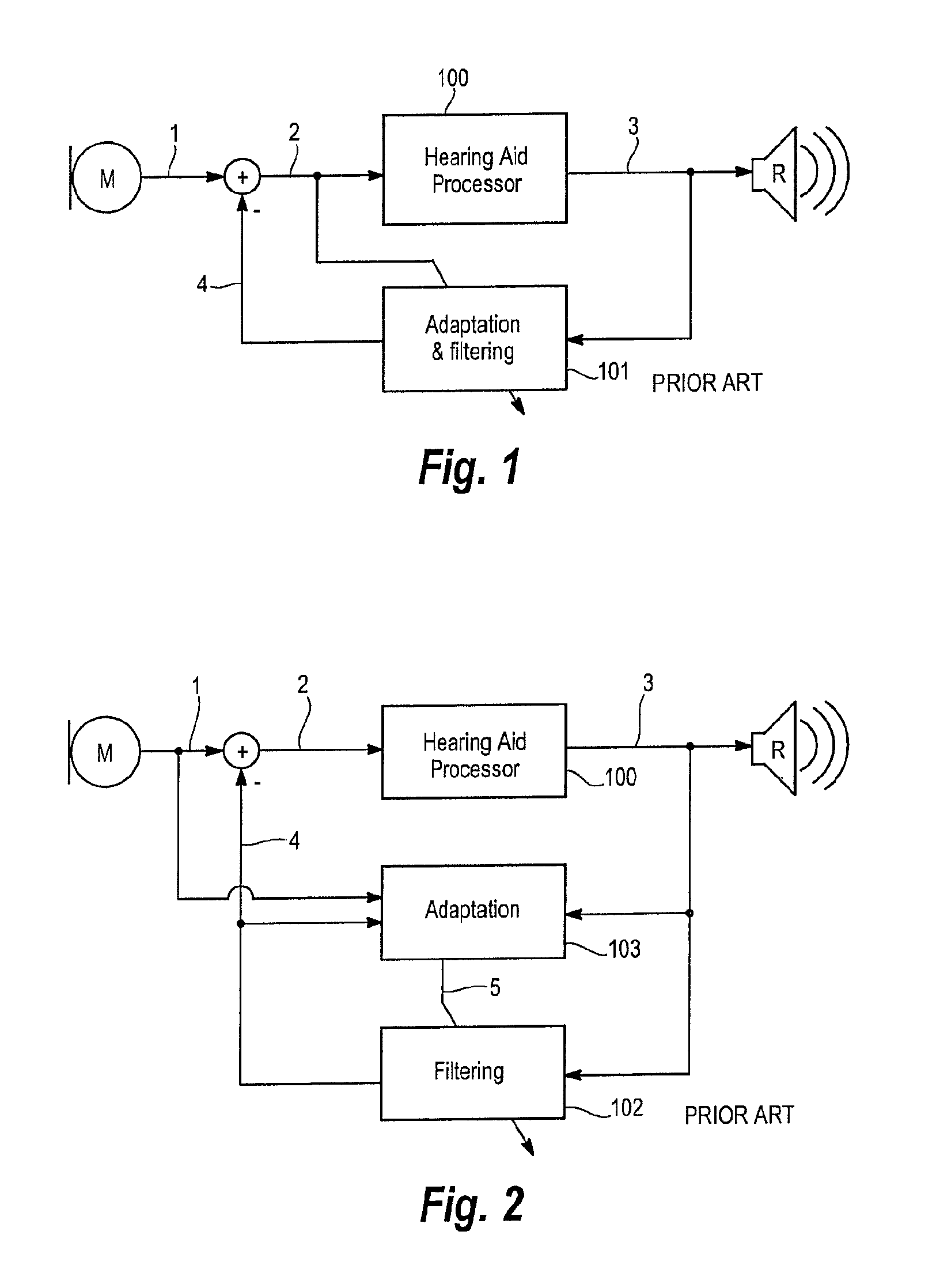Hearing aid, and a method for control of adaptation rate in Anti-feedback systems for hearing aids
a technology of anti-feedback system and hearing aid, which is applied in the field of hearing aids, can solve the problems of limiting the maximum amplification of hearing aids, unstable hearing aids, and risk of noticeable audible artefacts, and achieves the effects of improving the adjustment rate, and improving the adjustment ra
- Summary
- Abstract
- Description
- Claims
- Application Information
AI Technical Summary
Benefits of technology
Problems solved by technology
Method used
Image
Examples
Embodiment Construction
[0046]FIGS. 1-3 show schematic block diagrams of prior art hearing aids implementing some basic feedback cancellation schemes.
[0047]In FIG. 1, the microphone signal 1 from the microphone M is compensated by subtraction of the feedback cancelling signal 4. The resulting signal 2 is used as input to the hearing aid processor 100, and it is used as adaptation error in the adaptive feedback cancelling filter 101. The output of the hearing aid processor is transmitted to the receiver R. The hearing aid processor 100 may comprise time-varying and frequency dependent filters to account for the hearing loss, suppression of noise, automatic gain control for handling large signals, and time-delays. The block 101 represents an adaptive feedback cancellation filter and embraces a simultaneous filtering and adaptation of filter coefficients.
[0048]The diagram in FIG. 2 shows a system like the one depicted in FIG. 1 except that the adaptation mechanism implemented in block 103 is separated from th...
PUM
 Login to View More
Login to View More Abstract
Description
Claims
Application Information
 Login to View More
Login to View More - R&D
- Intellectual Property
- Life Sciences
- Materials
- Tech Scout
- Unparalleled Data Quality
- Higher Quality Content
- 60% Fewer Hallucinations
Browse by: Latest US Patents, China's latest patents, Technical Efficacy Thesaurus, Application Domain, Technology Topic, Popular Technical Reports.
© 2025 PatSnap. All rights reserved.Legal|Privacy policy|Modern Slavery Act Transparency Statement|Sitemap|About US| Contact US: help@patsnap.com



